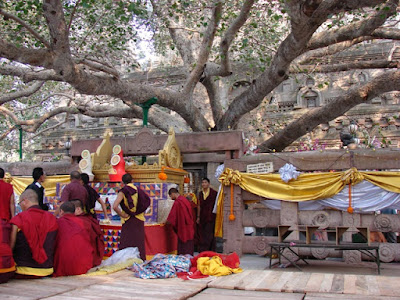All through history, developments everywhere throughout the world have connected spiritual or religious significance to natural spots that played key roles in their respective cultures. From the legendary homes of powerhouse gods like Zeus and Shiva to the tranquil spot where the mortal Buddha accomplished enlightenment, these are the spots of legends. Some are still used for age-old ceremonies, others have been lost to time, yet all crackle with an uncommon energy.
Mount Sinai , Egypt
Mount Sinai (Hebrew: הר סיני Har Sinai) ( Egyptian Arabic Gabal Musa, lit. "Moses' Mountain" or "Mount Moses"), also known as Mount Horeb, is a mountain in the Sinai Peninsula of Egypt that is the traditional and most accepted identification of the Biblical Mount Sinai. The latter is mentioned many times in the Book of Exodus in the Torah and the Bible as well as the Quran. According to Jewish, Christian and Islamic tradition, the biblical Mount Sinai was the place where Moses received the Ten Commandments. The biblical Mount Sinai was one of the most important sacred places in the Abrahamic religions. According to Bedouin tradition, it was the mountain where God gave laws to the Israelites.
Mount Parnassus , Greece Mount Parnassus , also Parnassos is a mountain of limestone in central Greece that towers above Delphi, north of the Gulf of Corinth , and offers scenic views of the surrounding olive groves and countryside. According to Greek mythology, this mountain was sacred to Apollo and the Corycian nymphs, and the home of the Muses. The mountain was also favored by the Dorians. There is a theory that Parna- derived from the same root as the word in Luwian meaning House.Uluṟu-Kata Tjuṯa National Park 1431 kilometres south of Darwin by road and 440 kilometres south-west of Alice Springs along the Stuart and Lasseter Highways. The park covers 2010 square kilometres and includes the features it is named after - Uluru / Ayers Rock and, 40 kilometres to its west, Kata Tjuta / Mount Olga Australia
Cenote Sagrado , Mexico
Lake Atitlán , Guatemala Lake Atitlán Central America with maximum depth about 340 meters . The lake is shaped by deep escarpments which surround it and by three volcanoes on its southern flank. Lake Atitlan
Crater Lake , Oregon
Glastonbury Tor , England
Mount Kailas , Tibet
Mahabodhi Tree, Bodh Gaya , India
The Bodhi Tree, also known as Bo (from the Sinhalese Bo), was a large and very old Sacred Fig tree (Ficus religiosa) located in Bodh Gaya (about 100 km (62 mi ) from Patna in the Indian state of Bihar), under which Siddhartha Gautama, the spiritual teacher later known as Gautama Buddha, is said to have achieved enlightenment, or Bodhi. In religious iconography, the Bodhi tree is recognizable by its heart-shaped leaves, which are usually prominently displayed. The term "Bodhi Tree" is also widely applied to currently existing trees, particularly the Sacred Fig growing at the Mahabodhi Temple, which is a direct descendant planted in 288 BC from the original specimen. This tree is a frequent destination for pilgrims, being the most important of the four main Buddhist pilgrimage sites.
Uluru-Kata Tjuta, Australia
The Sacred Cenote (Spanish: cenote sagrado, "sacred well"; alternatively known as the "Well of Sacrifice") refers to a noted cenote at the pre-Columbian Maya archaeological site of Chichen Itza , in the northern Yucatán Peninsula
Vortexes, Arizona
In Sedona , Arizona
Crater Lake is a caldera lake located in the south-central region of the U.S. state of Oregon Crater Lake National Park 655 m ) deep caldera that was formed around 7,700 (± 150) years ago by the collapse of the volcano Mount Mazama. There are no rivers flowing into or out of the lake; the evaporation is compensated for by rain and snowfall at a rate such that the total amount of water is replaced every 250 years. The Klamath tribe of Native Americans, who may have witnessed the collapse of Mount Mazama and the formation of Crater Lake , have long regarded the lake as a sacred site. Their legends tell of a battle between the sky god Skell and Llao, the god of the underworld. Mount Mazama was destroyed in the battle, creating Crater Lake . The Klamath people used Crater Lake in vision quests, which often involved climbing the caldera walls and other dangerous tasks. Those who were successful in such quests were often regarded as having more spiritual powers. The tribe still holds Crater Lake in high regard as a spiritual site.
Glastonbury Tor is a hill at Glastonbury , Somerset , England Scheduled Ancient Monument
Mount Kailash, also Mount Kailas ; Tibetan: is a peak in the Gangdisê Mountains Indus River , the Sutlej River (a major tributary of the Indus River), the Brahmaputra River , and the Karnali River (a tributary of the Ganges River Lake Manasarowar and Lake Rakshastal in Tibet










No comments:
Post a Comment